|
Getting your Trinity Audio player ready...
|
An email list is a database or collection of email addresses from people who opt to receive messages from a specific sender. Businesses, marketers, and sales professionals utilize email lists to communicate directly with their audience through emails, including customers or people interested in updates or promotions.
But remember, it’s not just about sending emails; it’s about having a thriving list of engaged contacts – a true goldmine for marketing and sales. Whether you’re starting small or from scratch, the real challenge lies in figuring out how to acquire those precious email addresses in the first place.
But here’s the kicker: it’s not just about quantity; it’s also about quality. Your email list should be a curated collection of potential customers, not just anyone with an email account.
So, how do you build an email marketing list? And how do you ensure you’re not just growing your list but growing it with the right people?
This comprehensive guide will equip you with practical email marketing strategies and techniques on how to get an email list for marketing. From getting email lists for marketing to business and e-commerce to affiliate marketing, we have got you covered.
Explore our comprehensive guide on how to build an email database!
How to Build Your Email Marketing List?
Ready to supercharge your email marketing list? Let’s introduce six effective techniques on how to build an email marketing list.
Offer a Captivating Lead Magnet
A lead magnet is a valuable and enticing offer that businesses provide to potential customers in exchange for their contact information, usually their email addresses. The purpose of a lead magnet is to draw the attention of the target audience, encouraging them to subscribe to an email list or take a specific action.
Your lead magnet should be a beacon of value that attracts your target audience. Consider creating resources like in-depth guides, exclusive reports, or access to webinars.
For instance, if you’re in the business consultancy sector, you can offer a comprehensive eBook titled “Navigating Business Challenges in a Digital Era”.

Add a Signup Button on Your Social Media Pages
Second, integrate your email list seamlessly with your social media strategy. This is a powerful element of how to grow your email list.
Thankfully, platforms like Facebook enable you to add a prominent “Sign Up” button to your business page. This simplifies the subscription process, bridging the gap between your social media presence and your email list.
Example: An online marketing agency could feature a “Join Our Community” button on its Facebook page, linking directly to the email signup form.
Promote Your Lead Magnet Through Advertising
Next, boost your lead magnet’s visibility through paid ads on platforms like Google Ads, Facebook Ads, or LinkedIn Ads. In doing so, craft engaging ad copy that clearly conveys the value of your lead magnet, encouraging users to click and explore.
Remember, paid advertising provides a scalable and measurable way to reach your target audience, allowing you to track conversions and optimize your campaigns for better results.
For example, if your lead magnet is an eBook on digital marketing, a well-crafted Facebook ad can target users interested in that field, ensuring your content reaches those most likely to benefit.
Use Pop-Ups to Make Your Forms More Prominent
Adding pop-ups to your website is like having friendly reminders that help visitors join your email list. There are different types of pop-ups, each with its own job.
- Exit-intent pop-ups show up when someone is about to leave, offering cool stuff like exclusive content or discounts.
- Timed pop-ups appear after a while, giving a little nudge to those who’ve been checking out your site.
- Scroll-triggered pop-ups pop in when you scroll down a page, kind of like a bonus for exploring.
The key is to make these pop-ups look nice, offer good stuff, and not bother people too much. When done right, pop-ups make it easier for visitors to notice and join your email list, increasing the chances they’ll want to stay connected with you.
Example: An e-commerce platform might use an exit-intent pop-up offering a limited-time discount for users who subscribe before leaving the site.
Reach Out to People Individually


Reaching out to people individually is like extending a personal invitation to join your email list. This approach involves a more one-on-one interaction, allowing you to connect with potential subscribers on a more personal level.
Whether through direct messages, personalized emails, or targeted outreach campaigns, the key is to tailor your communication to address the specific needs and interests of the individual.
For instance, consider a scenario where you’re a financial consultant wanting to grow email list. Instead of a generic mass email, you might send mass LinkedIn messages to your target connections, acknowledging their unique challenges and offering insights into how your newsletter can provide valuable financial strategies tailored to their needs.
This personal touch not only demonstrates that you understand their specific pain points but also highlights the exclusive value they stand to gain by becoming part of your email community.
When reaching out individually, authenticity is crucial. Avoid sounding overly promotional and focus on building a genuine connection. Share how being part of your email list can benefit them personally or professionally, and be open to addressing any questions or concerns they may have.
Add a Subscription Bar to Your Website
Adding a subscription bar to your website is like setting up a friendly, always-open door for visitors to join your email community. This unobtrusive and ever-present feature makes it easy for people to sign up while they explore your website.
It’s like extending a warm invitation, saying, “Hey, want to stay in the loop? Just drop your email here!” When you place this subscription bar strategically, it ensures that it’s visible without being pushy, providing a seamless way for your audience to engage with your content and updates.
Imagine you have a tech company, and you want visitors to be part of your email community for the latest tech trends. In this scenario, you could place a subscription bar prominently at the top of your website with a message like “Stay Updated on the Latest Tech Trends – Subscribe Now”.
This subscription bar acts as a constant reminder, gently nudging users to take that step and become part of your email list.
To make this feature even more effective, consider adding a brief and compelling value proposition alongside the subscription form. Let your visitors know what exclusive content, offers, or insights they can expect by subscribing.
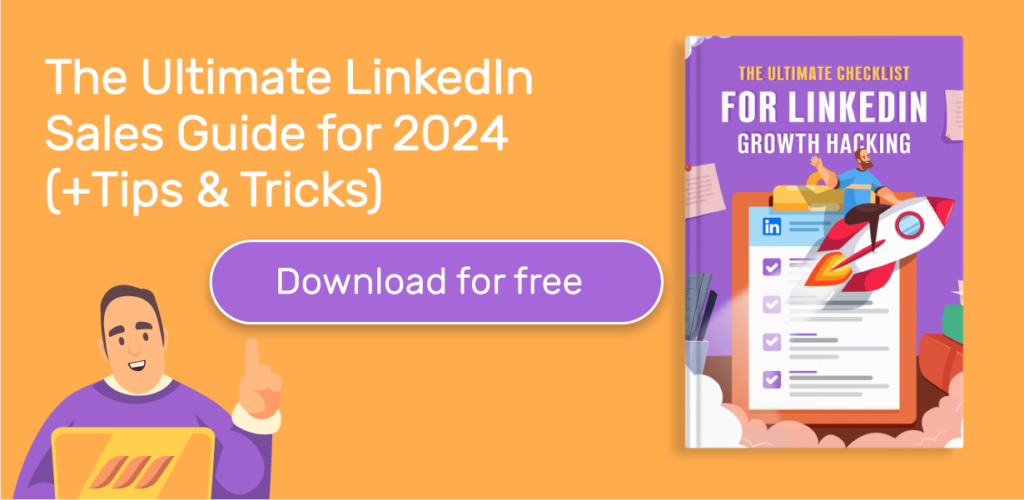

How to Build an Email List for Marketing
Building a successful email list for marketing requires a thoughtful and strategic approach. Here’s how to build an email marketing list that will also promote your brand and boost conversion.
1. Choose the Right Email Marketing Software
First things first, your email marketing software will determine the success of your email campaigns. It is like laying the foundation for a sturdy building. As such, you must choose your email marketing platform judiciously.
It is a good idea to explore reputable email marketing automation tools such as Dripify, Mailchimp, HubSpot, or Constant Contact. In doing so, consider your business’s specific needs – factors like user-friendliness, scalability, and integration with your existing tools.
For instance, if you prioritize automation for personalized communication, Dripify offers a versatile solution. This platform allows you to set up automated workflows based on user behavior, ensuring tailored and efficient communication with your audience.
2. Create a Compelling Incentive
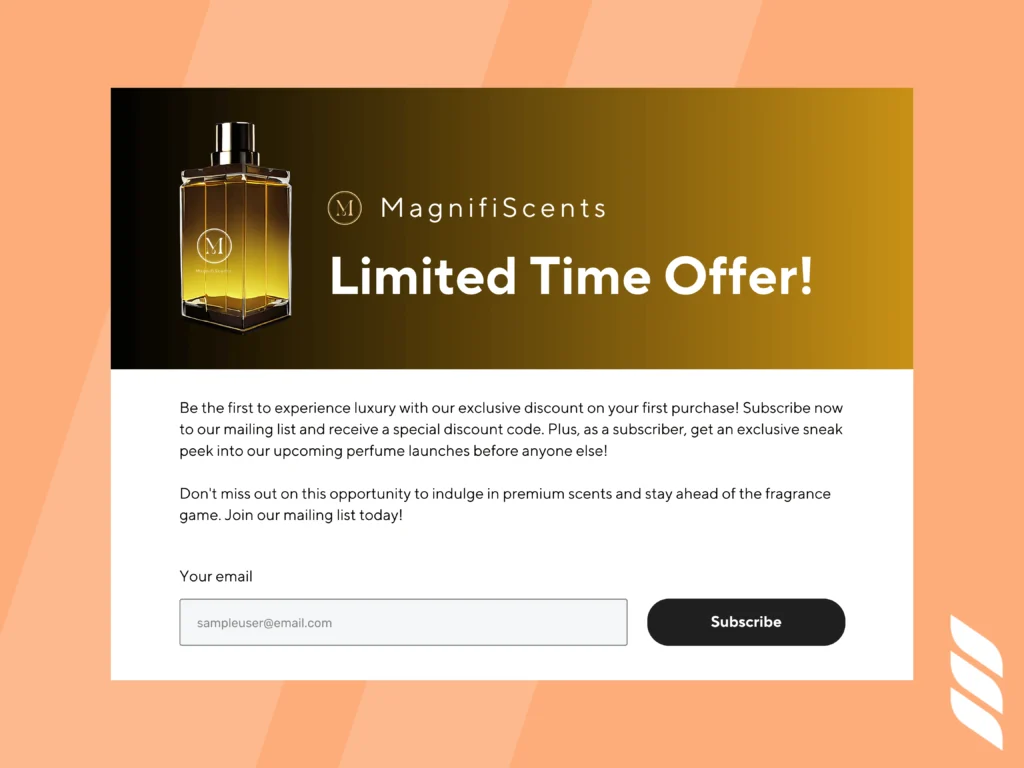

Second, consider crafting a compelling incentive for potential subscribers, as it is the key to attracting and retaining your audience. Think of it as offering a valuable gift to entice people to join your community. Remember to go beyond the ordinary and tailor your offers to align with your audience’s interests.
For example, an e-commerce business might provide a time-sensitive discount on the first purchase coupled with a sneak peek into upcoming product launches for subscribers. The goal is to make your incentive so irresistible that potential subscribers feel compelled to join in for the exclusive benefits.
3. Improve Your Call-to-Action (CTA) Copy
The language you use in your call-to-action (CTA) is the voice of your invitation. As such, consider swapping out bland phrases like “Subscribe” for dynamic alternatives that communicate the unique benefits of joining.
Create CTAs that resonate with your audience, setting the stage for a personalized and valuable subscriber experience. Your CTA is the first impression users have of your email list, so make it compelling and action-oriented. Don’t hesitate to use ChatGPT for email marketing, as it saves you time.
For instance, you can replace a generic button with “Get Exclusive Updates” or “Unlock VIP Access”.
Consider the example of an online lifestyle magazine. Rather than a standard “Subscribe Now”, their CTA might read “Join the Inner Circle for Exclusive Lifestyle Insights”.
This not only communicates the exclusivity of the content but also paints a picture of a community that subscribers become a part of, enticing them with the promise of unique and valuable insights.
What’s more? Always be mindful of the placement of your CTA. Whether it’s on your homepage, blog posts, or product pages, ensure that it seamlessly fits into the user’s journey.
Say your audience is exploring a blog post on the latest tech trends. Consider putting up a CTA like this: “Stay Ahead With Weekly Tech Updates”.
4. Place Signup Forms Smartly
Think of your website as a lively city, and strategically placing signup forms is like putting up friendly signs in the busiest spots. It is good to choose prime areas like the homepage, blog posts, or where your products shine for your signup forms.
For example, say you have a fashion store. You can slip a signup form into a blog post about the latest trends or in your monthly newsletter. This will help catch the eye of fashion lovers in the know, encouraging them to join your email list.
Make sure to think about where your visitors are exploring. If it’s cool tech stuff, a signup form on the homepage saying “Be the First to Know About Exclusive Tech Deals” is like an invitation to a VIP tech party.
Also, pop-ups that show up just at the right time are like polite reminders without being annoying, nudging visitors to join in. It’s like making sure your invitation is both seen and welcomed.
5. Add an Exit Intent Pop-Up Form to Your Website
Exit-intent pop-ups act as courteous guides, extending a last-minute invitation to visitors who are about to leave. These pop-ups appear when users show signs of exiting, providing them with a final incentive to subscribe.
Consider an example where an online educational platform offers a downloadable resource related to the content the visitor was viewing. This transforms a potential departure into an opportunity for engagement, capturing the interest of users who might otherwise leave without subscribing.
6. Create Landing Pages that Convert
Imagine your landing page as your own cool booth at a lively fair – the place where people decide if they want to join the fun. First off, your landing page is like a personalized experience. As such, you should make it shine with visuals, simple words, and a clear layout.
For example, a software company eager to entice potential users might create a landing page promoting exclusive access to a beta version of their latest tool. The landing page could have cool pictures, a quick rundown of the perks, and an easy-to-find signup form.
Your landing page copy should guide your visitors through your virtual fair booth. Start with a catchy headline, add a short and sweet description of what subscribers get, and maybe throw in some happy thoughts from other subscribers.
This focused approach ensures that visitors expressing interest in joining your list are greeted with a dedicated space that clearly communicates the specific benefits awaiting them upon subscription.
Finally, end it with a strong “Subscribe Now” button. This way, visitors get the scoop before deciding to join your email list.
But wait! Don’t forget mobile users. Make sure your landing page looks good and works well on phones and tablets. It’s like making sure everyone, no matter what device they’re using, can enjoy your virtual fair booth.
Lastly, keep tweaking. Just like a booth owner might rearrange things for a better look, check your landing page metrics. If people are bouncing off, try changing up headlines, pictures, or buttons and work on this without using AI because, at this stage, you need to touch the user on an emotional level and use human creativity, which is often a problem of ChatGPT in email marketing. A/B testing is like trying different setups to see what your visitors love the most.
How to Build an Email List for Affiliate Marketing
Building an email list for affiliate marketing is akin to establishing a reliable network of allies who are genuinely interested in the products or services you’re promoting. Wondering how to grow your email list for affiliate marketing?
Let’s dive into effective strategies tailored for affiliate marketers looking to grow their email community and foster lasting connections with their audience.
1. Use a Conversion Optimization Toolkit
Think of a conversion optimization toolkit as your affiliate marketing toolbox to get email addresses. Tools like OptinMonster or Unbounce can help you create high-converting opt-in forms and landing pages. These tools provide functionalities such as exit-intent pop-ups, timed triggers, and A/B testing, optimizing your chances of turning website visitors into email subscribers.
Example: Imagine you’re promoting a fitness product as an affiliate. You can use a conversion toolkit to create an exit-intent pop-up offering a free workout guide in exchange for an email. This not only adds value for your audience but also builds your email list with fitness enthusiasts.
2. Optimize Your Signup Forms
Your signup forms are like entry tickets to an exclusive club. As such, you should optimize them for simplicity and clarity. Ensure that users know what they’re signing up for and highlight the benefits. Make the process quick and user-friendly to encourage more people to join.
- Be Crystal Clear: Clearly communicate what subscribers can expect by joining, tailoring your message to highlight the unique value of your affiliate community.
- Keep It Simple: Simplify the signup process by asking for essential information only, typically an email address and optionally a first name. A streamlined process reduces friction and increases sign-up rates.
- Highlight Benefits: Showcase the perks of joining your community on the form itself. For instance, you could emphasize exclusive content, discounts, or insider insights to entice potential subscribers.
- Visual Appeal Matters: Ensure the form aligns with your brand’s aesthetic, using visually appealing designs and colors. Create a visually pleasing and cohesive representation of your affiliate brand.
- Mobile-Friendly Design: Make sure your form looks good and functions seamlessly on mobile devices. A mobile-friendly design ensures accessibility and ease of use for visitors on various devices.
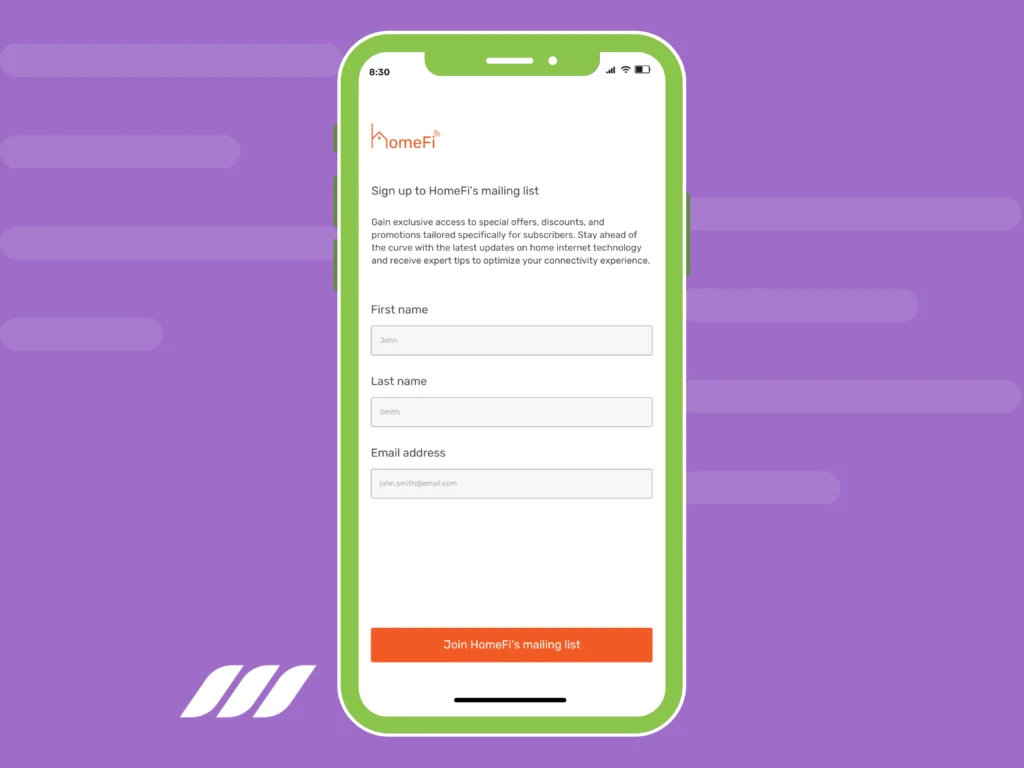

- Encourage Quick Action: Write a compelling copy that encourages immediate action. Use phrases that convey a sense of urgency, nudging visitors to sign up promptly and experience the immediate benefits.
- Test and Tweak: Optimization is an ongoing process, so don’t forget to do A/B testing with different elements. Also, regularly analyze metrics such as conversion rates to refine and enhance your forms continually.




3. Create Helpful Content
Develop valuable content that resonates with your audience’s interests. Whether it’s blog posts, videos, or downloadable guides, your content should provide solutions or insights related to the products or services you’re promoting.
Example: Suppose you’re an affiliate for a tech gadget. You can create blog posts, how-to guides, videos, reviews, or comparisons for your audience. In exchange for email signups, offer an exclusive in-depth guide on choosing the best tech gadgets.
4. Automate Your Email Marketing Campaigns
Remember, automation is the heartbeat of efficiency as it ensures that your affiliate marketing efforts continue to work even when you’re not actively managing them.
It is a good idea to set up automated email campaigns to nurture your subscribers over time. Plus, you should tailor these campaigns to provide valuable information, exclusive offers, and product recommendations.
For example, as an affiliate for a subscription box service, you can use Dripify to automate a series of emails that introduces subscribers to different products in the box, shares user testimonials, and offers exclusive discounts, gradually nurturing them towards making a purchase.
5. Use Ads to Promote Your Lead Magnet
Investing in paid ads is like putting up billboards for your affiliate offers. Consider using platforms like Facebook or Google Ads to promote your lead magnet – the irresistible offer that encourages people to subscribe. This targeted approach can efficiently attract individuals interested in the products or services you’re affiliated with.
Example: Say you’re affiliated with a travel booking platform. You can run a Facebook ad promoting a free travel guide for subscribers. The ad targets users interested in travel, ensuring that your lead magnet reaches an audience genuinely intrigued by your affiliate offers.
6. Create and Promote a Newsletter
A newsletter acts like a powerful affiliate marketing bulletin, keeping your audience informed and engaged. You can use it to regularly share updates, product reviews, and exclusive offers. In doing so, always encourage subscribers to forward the newsletter to friends, expanding your reach and growing your email list.
For instance, if you’re affiliated with a fashion brand, you can create a newsletter highlighting the latest trends, styling tips, and exclusive discounts. This will encourage subscribers to share the newsletter with fellow fashion enthusiasts, organically growing your email list.
How to Build an Email List for Business
Wondering how to build a huge email list for your business? You’re not alone! Building a thriving email list for your business involves an array of strategic approaches tailored to connect with your audience on multiple fronts.
Read on for some tried and tested strategies to collect email addresses for your business.
1. Run Social Media Contests or Giveaways
Organizing contests or giveaways on social media is like planting seeds of excitement. This dynamic strategy also helps expand your email list organically.
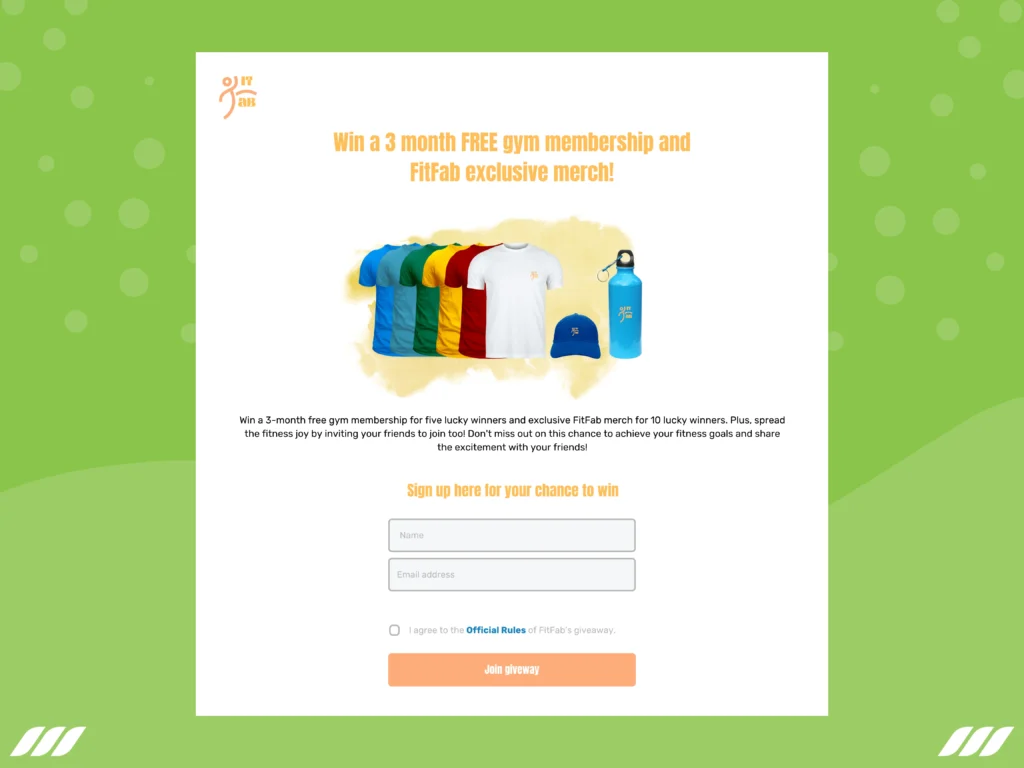

Here’s a concise breakdown of key tactics:
- Create Irresistible Prizes: Make sure your prizes align with your brand to capture interest. For instance, a tech gadget retailer could offer the latest device as a grand prize, attracting tech enthusiasts.
- Encourage Social Sharing: Boost your campaign’s reach by incentivizing participants to share it on social media. A beauty brand, for instance, could offer extra entries for sharing favorite products or tagging friends.
- Leverage User-Generated Content: Harness participant creativity by incorporating user-generated content. For example, a home decor brand could run a contest showcasing how customers style their products in their homes.
- Integrate Email Sign-Up: Make email sign-up a requirement for participation to convert social media buzz into a valuable email list.
- Engage Actively: Participate actively in the giveaway, responding to comments and reposting user-generated content. This personal touch humanizes your brand, as seen in a fitness brand enthusiastically engaging with participants during a fitness challenge.
- Follow Up with Exclusive Offers: Capitalize on post-event momentum by following up with exclusive offers. Plus, express gratitude and encourage continued engagement. For instance, a specialty food store could offer participants a limited-time discount on a popular product.
2. Collect Email Addresses at Your Store or In-Person Event
It is no secret that in-person interactions provide a great chance to connect directly with your audience. For this reason, it is good to set up sign-up stations or have friendly staff members actively engage with customers at your physical store or during events.
This personal touch not only encourages sign-ups but also builds a positive image of your brand. For a specialty food store, this could involve offering tastings and inviting attendees to sign up for exclusive recipes and discounts.
Also read: How to Find Someone’s Email
3. Try a Scroll Box
Putting up a scroll box on your website is like having a subtle guide along the customer’s journey. These unobtrusive pop-ups, timed to appear as visitors scroll, present a gentle invitation to subscribe.
Example: For a travel agency, a scroll box could offer a downloadable travel guide, enticing wanderlust-filled visitors to join for more travel insights and exclusive offers.
4. Use a Referral Program
Turning subscribers into advocates is a powerful way to organically grow your email list. You can use a referral program to encourage your existing subscribers to help grow your email list. This not only expands your audience but also strengthens the sense of community around your brand.
Here’s how to create an irresistible referral program that can become the catalyst for a community-driven expansion of your email list:
- Irresistible Incentives: Offer rewards that resonate with your audience, such as exclusive discounts or limited-edition items, to motivate advocates.
- Empower Existing Subscribers: Provide tools like referral links, email sign-up forms, and pre-written messages to help current subscribers easily share and advocate for your brand.
- Win-Win Scenario: Ensure both referrers and the referred party benefit, creating a mutually advantageous arrangement that fosters positive engagement.
- Harness Social Sharing: Encourage participants to share referral links on social media, organically expanding the program’s reach.
- Track and Reward Actively: Monitor and acknowledge referral activity, using analytics tools to identify top contributors and reward their efforts, fostering a culture of recognition.
- Foster a Sense of Belonging: Create exclusive spaces, like VIP forums or social media groups, where advocates can connect, share experiences, and promote your brand, fostering a sense of community.
- Adapt and Evolve: Be adaptive to changes, analyze feedback and program impact to make necessary adjustments, and ensure the referral program remains dynamic and effective over-time.
5. Ask Visitors to Opt-In at Checkout
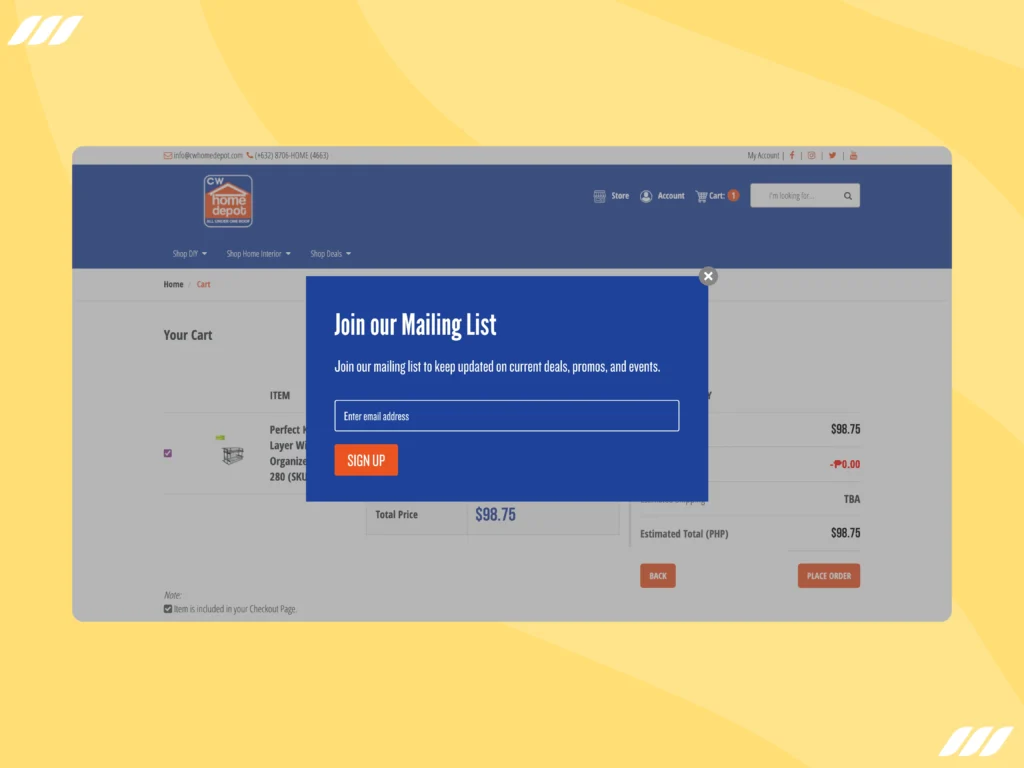

The checkout process is a crucial touchpoint for capturing email addresses. As such, you should integrate a seamless opt-in option into the purchase journey, offering customers the chance to stay updated on future offerings and promotions.
Example: An online home decor store could invite customers to subscribe for early access to new collections and exclusive discounts during the checkout process.
6. Create More Landing Pages
As explained earlier in this guide, dedicated landing pages act as focused arenas for specific campaigns or promotions. As such, you should create more of these pages and ensure they align closely with the offer, emphasizing exclusivity and benefits to entice visitors to subscribe.
Say you want to boost the email list for a fitness studio that is launching a new workout program. You could design a landing page offering exclusive access to training materials, motivating fitness enthusiasts to become part of the community and opt-in for your email list.
How to Build an Email List for eCommerce
Building an email list for e-commerce involves integrating strategies that seamlessly align with the online shopping experience. This connection, in turn, becomes a powerful driver for email list building and increased customer retention.
Let’s explore a comprehensive approach to how to build an email database tailored specifically for eCommerce success:
1. Encourage Subscribers to Forward Emails
Turn your subscribers into brand ambassadors by encouraging them to share and forward your emails. To make it easy, include share buttons and calls to action in your emails, urging recipients to pass along valuable content or promotions. This not only expands your reach but also attracts new subscribers through trusted recommendations.
Example: A fashion e-commerce store could include share buttons in their newsletters, encouraging subscribers to share the latest trends with friends and family.
2. Add Links to Your Employees’ Signatures
Leverage your team’s email signatures as a subtle yet effective way to grow your list. Include a link to your newsletter signup or a special offer in your employees’ email signatures. This strategy capitalizes on the network effect, tapping into your team’s connections to reach potential customers.
For instance, if you’re an e-commerce company selling eco-friendly products, you could include a link in your employees’ signatures offering a special discount for new subscribers.
3. Ask Website Visitors for Feedback
Engage with your website visitors by seeking their feedback. For example, you can use surveys or feedback forms that include an option for visitors to subscribe to your email list. This not only gathers valuable insights but also provides an opportunity to capture email addresses from individuals already showing interest in your products.
4. Link to Offers Across Your Website That Capture Email Signups
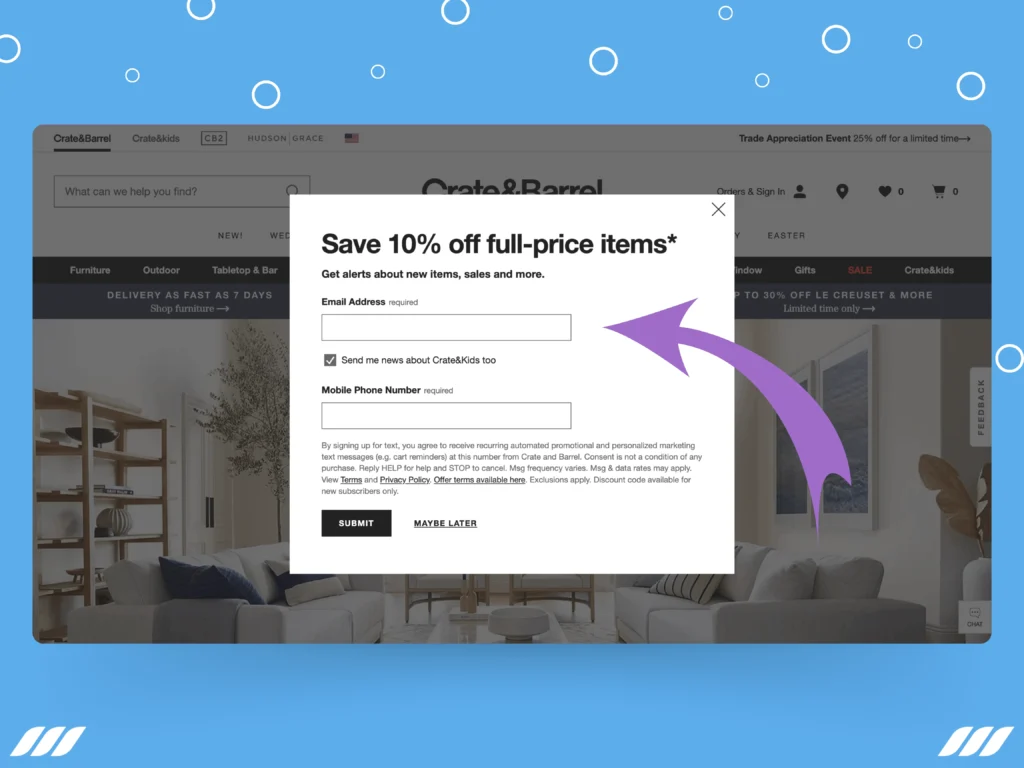

Strategically place links to enticing offers or promotions throughout your website. It is a good idea to feature these links prominently on product pages, in the header, or as exit-intent pop-ups. Ensure that each offer encourages visitors to subscribe, creating a seamless integration between their interest in your products and joining your email community.
For example, a home decor e-commerce site could display a pop-up offering a discount on the first purchase when visitors explore a new collection.
5. Run a Promotion With a Partner Website
Collaborate with partner websites or influencers to run joint promotions. Remember, coordinated efforts can include cross-promotional emails encouraging subscribers from both parties to explore the offerings of the other. This not only introduces your brand to a new audience but also facilitates list growth through shared promotions.
Let’s say you’re a beauty e-commerce store that wants to build an email list. You could collaborate with a skincare influencer, running a joint promotion where each encourages their subscribers to explore the other’s products with exclusive discounts.
6. Optimize Your Signup Forms
Ensure your signup forms are user-friendly and strategically placed across your website. You can simplify the process by asking for minimal information, typically just an email address. Plus, don’t forget to optimize the design for mobile users to capture potential subscribers regardless of the device they’re using.




How to Grow Your Mailing List?
Now that you know how to build an email list from scratch, let’s explore some proven strategies covering how to grow email subscriber lists.
1. Implement Double Opt-In
Ensure the quality of your email list through a double opt-in process. After users subscribe, send a confirmation email requiring them to confirm their subscription. This extra step verifies the legitimacy of subscribers, reducing the risk of fake or inactive email addresses.
2. Run Targeted Email Campaigns
Segment your list according to user behavior, preferences, and demographics. Running targeted campaigns ensures that your messages resonate with specific segments of your audience, fostering engagement and helping grow your email list.
For example, an online education platform might send tailored emails to different segments, such as professionals seeking career advancement and students exploring new courses.
3. Host Webinars and Virtual Events
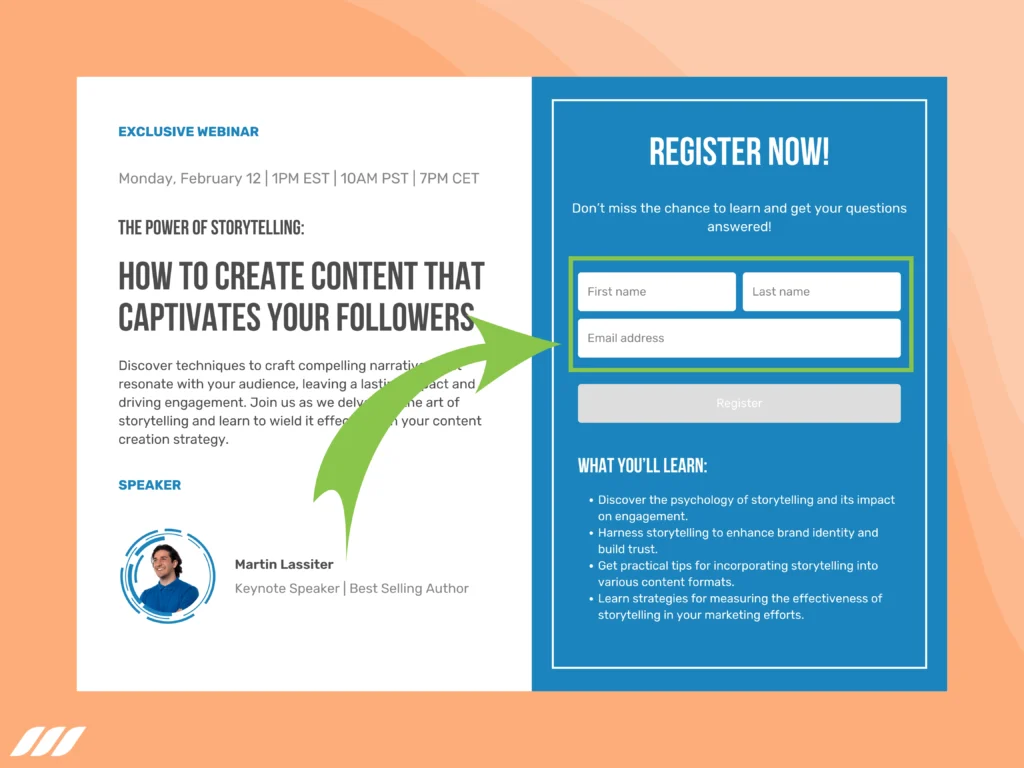

Boost your engagement efforts through webinars and virtual events. In doing so, make it mandatory for participants to sign up with their email addresses. This will help expand your list while providing valuable content.
4. Use Social Proof
Showcase testimonials and social proof from satisfied subscribers to grow your subscriber base. Remember, highlighting positive experiences can instill confidence in potential subscribers, encouraging them to join your email list.
For example, a subscription box service might feature customer testimonials on their signup page, emphasizing the value and satisfaction of existing subscribers.
5. Collaborate With Influencers
When you partner with influencers in your industry or niche, they can help expand your reach. These individuals can promote your brand to their followers, driving traffic to your email signup forms.
For example, a fitness apparel brand might collaborate with fitness influencers to promote exclusive discounts and content available to email subscribers.
6. Optimize Email List Hygiene
Finally, be sure to regularly update and clean your email list to maintain its health. Remove inactive subscribers, correct any inaccuracies, and update preferences to ensure that your communications reach the right audience.
For instance, a marketing agency might conduct quarterly audits to identify and remove inactive subscribers, ensuring their email list remains responsive and engaged.
Conclusion
The process of building and growing your email list is multifaceted and ongoing. The techniques and strategies outlined in this guide are not merely about collecting email addresses but also about cultivating a community of engaged and interested individuals. So, make sure to stay proactive, adapt to evolving trends, and watch your email list become a powerful asset in your marketing arsenal.

![How to Write a Price Increase Letter [Tips, Examples, and Free Template]](https://dripify.io/wp-content/uploads/2021/12/27.png)
![How to Write an Effective Collaboration Email [+Templates]](https://dripify.io/wp-content/uploads/2023/05/13.png)



